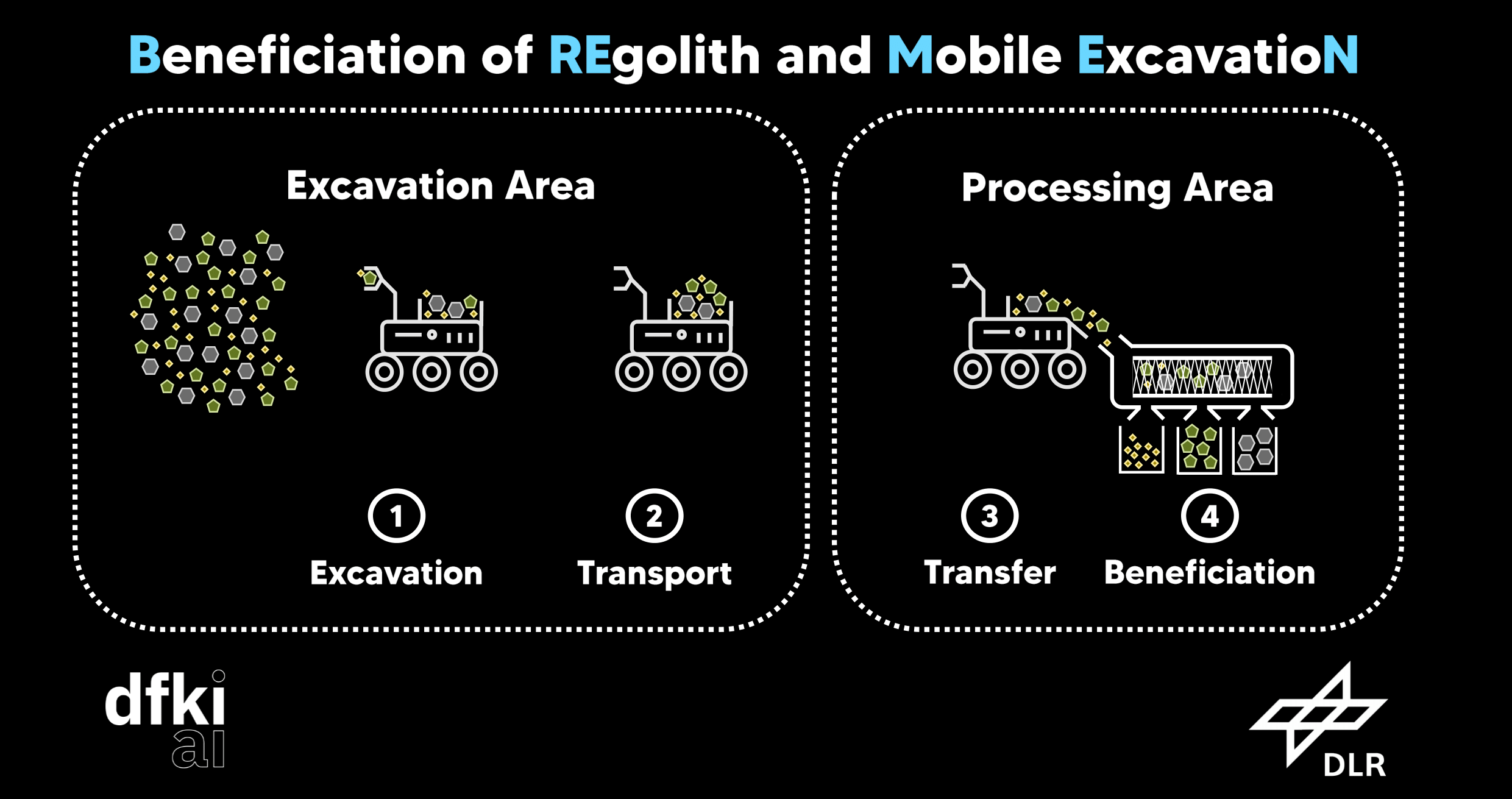Team BREMEN
DLR, DFKI
The Team
Based in Bremen (City of Space), one of Europe’s leading space hubs, Team BREMEN (Beneficiation of REgolith and Mobile ExcavatioN) brings together expertise from two of Germany’s most renowned research institutions: the German Aerospace Center (DLR) and the German Research Center for Artificial Intelligence (DFKI).
At DLR’s Institute of Space Systems, the Synergetic Material Utilization group, led by Dr. Paul Zabel, develops innovative in-situ resource utilization (ISRU) technologies for lunar and Martian exploration. Meanwhile, at DFKI’s Robotics Innovation Center, the Space Robotics team, led by Dr.-Ing. Mehmed Yüksel and Manuel Meder, develops cutting-edge robotic systems for planetary surface operations. By combining DLR’s expertise in regolith beneficiation with DFKI’s strengths in robotics and excavation, Team BREMEN is uniquely positioned to take on the challenge.
The team also brings together a diverse group of experienced scientists, PhD candidates, engineers, and students, each contributing unique expertise to tackle the challenges of lunar regolith excavation and beneficiation. This interdisciplinary collaboration fosters a dynamic environment where cutting-edge research meets practical application, ensuring our approach is both scientifically rigorous and technically robust.
The Solution
Team BREMEN’s solution features a modular architecture that integrates a mobile rover for regolith excavation with a stationary beneficiation system for size sorting. This approach enhances efficiency, scalability, and operational flexibility, making it highly adaptable for future lunar missions.
At the heart of our system is Coyote III, a four-hybrid-wheeled rover optimized for mobility in unstructured terrains and controlled via teleoperation. Designed with a standardized Electro-Mechanical Interface, it accommodates modular payloads, including an excavation system. By decoupling regolith collection from processing, our approach minimizes rover weight and power requirements, while enabling scalable, long-term lunar operations.
Inspired by ISRU-driven missions like Chandrayaan-3 and commercial lander-rover systems such as ispace’s M2, our solution aligns with the evolving landscape of lunar exploration, paving the way for sustainable resource utilization beyond Earth.

